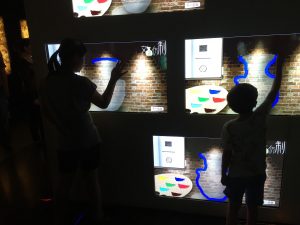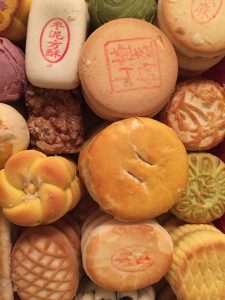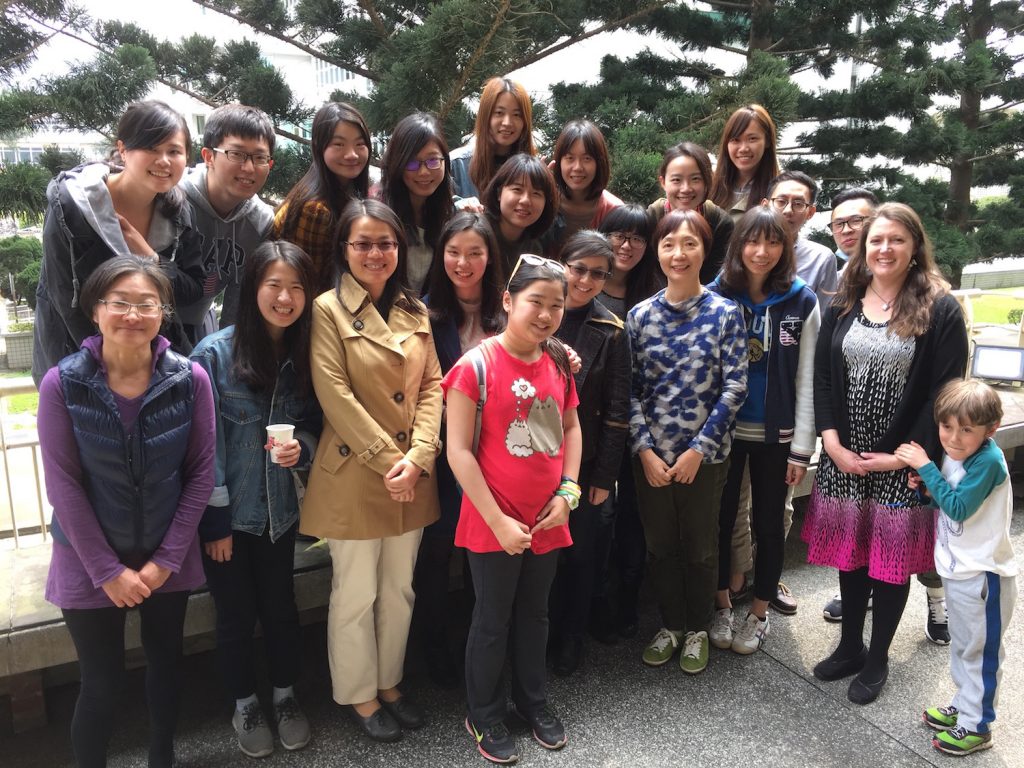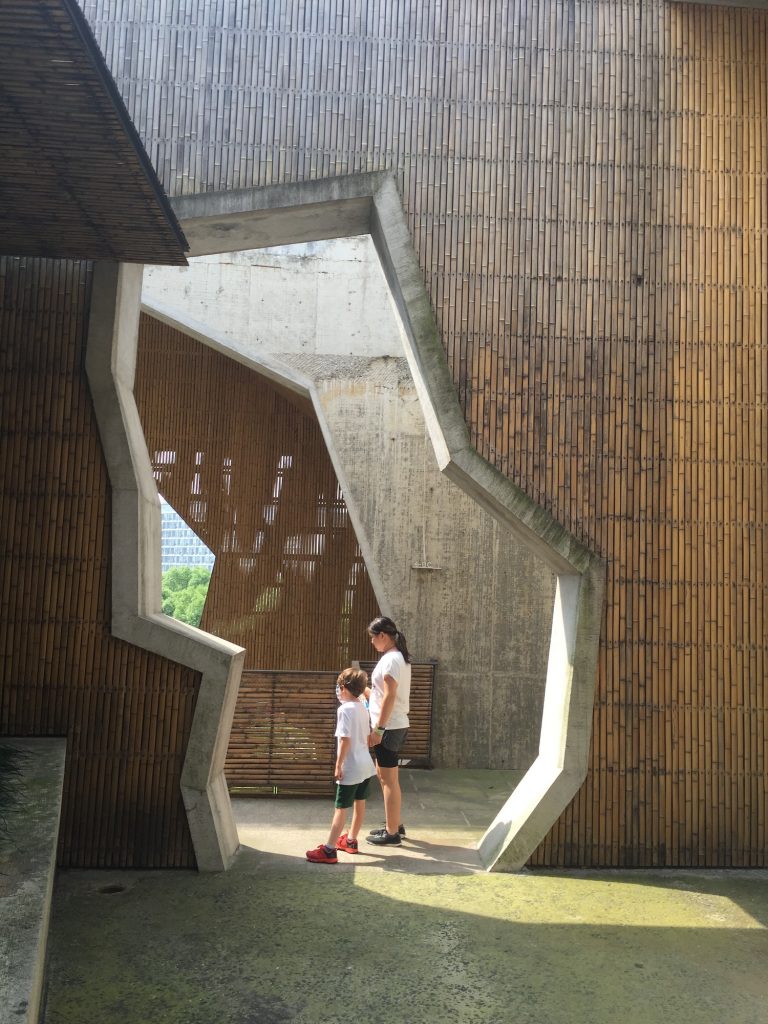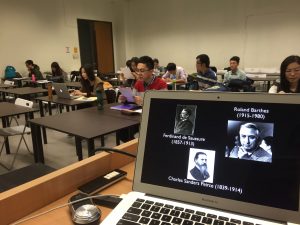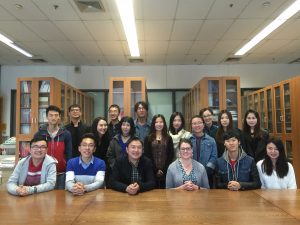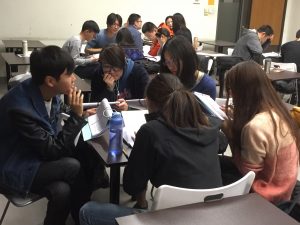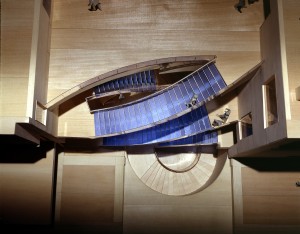Barbara Horlbeck is an Adjunct Instructor for the Department of Art History. She is an arts and culture professional and, in her work as Study Leader for the National Trust for Historic Preservation and the Smithsonian, she travels internationally and provides a wide range of lecture programs on the arts. She obtained her masters degree in art history from the University of St. Thomas in 2003.
Several years after I obtained my masters degree in art history, I was given an opportunity to teach an Asian art history course as adjunct at the College of St. Benedict/St. John’s University. The experience opened the door to a decade of teaching a wide selection of courses, both face-to-face and online, at a number of Minnesota colleges and universities. But little did I know that the time I spent researching topics and developing courses would be the foundation for a passionate and varied career as an arts and culture professional! Today, my work includes not only teaching but also developing and giving Seminars and lectures on the arts, providing tours at the Minneapolis Institute of Art, helping business executives understand the cultural legacy in the regions where they seek relationships, and, in an unexpected but deeply satisfying turn, working as International Study Leader for the National Trust for Historic Preservation and the Smithsonian.

Barbara Horlbeck was Study Leader on an educational travel program on the Mediterranean coast of Spain this past year with a group from the National Trust, Archeological Association of American (AIA), and Harvard University. The program included time at the Alhambra, the location of research on the calligraphic inscriptions that were a part of Barb’s masters’ qualifying paper at UST.
This opportunity arose in an interesting way. Several years ago, at the Charleston Library Society in historic Charleston, South Carolina, I gave a two-day Arts and Influences Seminar, “Arts of China.” One attendee was from the National Trust for Historic Preservation. During a break, he approached me and said, “We have a tour going to China next year with guest lecturer Julie Nixon Eisenhower. She will speak on the role her father played as president in the opening up of China. We would love to have you speak on the region’s legacy in the arts. Might you be interested?” Well, everyone knows the definition of a second and my response was short of that – immediate and affirmative! So, the following year, I traveled with Julie and David Eisenhower (and many other equally fascinating people) through Beijing and Xi’an to tour their historic wonders, to Wuhan’s Mao Zedong’s Villa and the Hebei Provincial Museum with its world-famous collection of antiquities, to the top of breathtaking Huangshan (Yellow Mountain), a World Heritage site and source of 1,300 years of inspiration to poets and painters, and, of course, to Shanghai, home of one of my favorites spots, the Shanghai Art Museum, and the city’s innovative architecture and neck-bending skyscrapers. And during our travels, I gave lectures on China’s prolific art and architectural masterpieces.

Barb with David Eisenhower and Julie Nixon Eisenhower in China in 2013 during the National Trust’s program “Ancient Kingdoms of China.”

The UNESCO site Huangshan (Yellow Mountain) is filled with pine, bamboo and rock, all three the source of more than a thousand years of painting. The sweeping bamboo forest in the lower portion of the mountains, was the location the magical martial arts scenes from the film “Crouching Tiger, Hidden Dragon.”

Chinese couples all over the world choose auspicious sites for their important wedding photographs. Here a couple, with the bride wearing the traditional, distinctive red dress, pose in front of Beijing’s historic Temple of Heaven.
That first experience in China began an opportunity to travel several times a year to many points around the world as Study Leader with the National Trust and Smithsonian Journeys. These educational travel programs include numerous UNESCO World Heritage sites, tours though ancient ruins and contemporary markets, and explorations in a wide variety of museums, large and small. The nature of the travel itself has been equally varied. Our mode of transportation has included river cruise ship (six days on China’s Yangtze River), luxury train (the Eastern Oriental Express from Bangkok through Thailand and Malaysia to Singapore), a small ocean-going ship (from Normandy to the Isle of Iona in the Hebrides via Dublin and Wales) and, more recently, on the historic four-masted barque, Sea Cloud, along Spain’s Mediterranean coast (from Barcelona and Tarragona to Valencia and Granada).
Preparing for these programs is a huge amount of work but it is a process I adore. It may be hard to believe but, when it happened, I hated to see my graduate courses draw to a close! I adore digging and researching and discussing. I did then and I do now. So, the programs on which I lecture afford me the opportunity to research and dig deeply. The result is a wide range of lectures that are reflective of my travels: “Robert Adam: Scotland’s Master Architect and Designer,” “Masterpieces of Chinese Art: A Closer Look,” “Nature and Geometry: Architect Antoni Gaudi’s Eccentric Brilliance,” “Art and Light: Recording Battle and Beauty from Hastings to Trouville,” “The Alhambra: Poetry from the Walls,” “The Malay Peninsula to Balinese Design: Arts and Influences,” “Masterpieces of Andalusia,” and “From Ayr to Iona: Faith, Stone and Design.” Future programs include travel by ship from Barcelona to Lisbon and to the North Sea with stops at Neolithic sites in the Orkney Islands and early Norse settlements in the Shetlands as well as by land in Eastern Europe to explore the rich architectural history of Prague, Bratislava, and Budapest. So my research continues!

The Alhambra’s Mirador, or viewing tower, was originally built with a majestic view of the landscape. A wall built by Charles V currently blocks that view but the detailed calligraphy, muqarnas, and arabesque created in stucco help make this site one of the finest examples of Islamic architecture in the world.
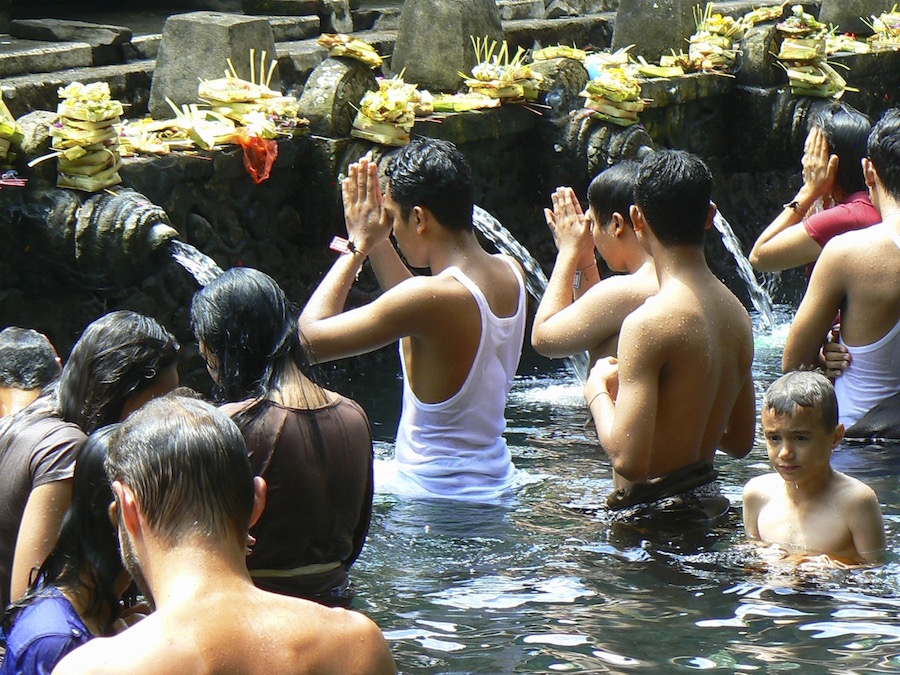
Tirta Empul Temple, in the hills of Bali, was founded in the 10th century and dedicated to the Hindu god Vishnu. This sacred site with its cool, clear, spring-fed waters provides an important location in ritual and prayer for Hindus even today.

The island of Iona, in Scotland’s northern Inner Hebrides, is the location where the monk Columba established a monastery in the year 563. This monastic center evolved to become an important site in Celtic Christianity. Its scriptorium produced many important documents, including the famous Book of Kells. Several Irish crosses, including St. Martin’s Cross seen here, were added to the site in the 9th century.
The nature of my work as Study Leader includes what I consider to be an added bonus. The people themselves who travel with these programs are ones who are fascinating and who view life with a deep curiosity and a passion for learning. They are curious about the world, they seek to educate themselves, and, importantly, they want to understand more deeply the connections between what they are experiencing and their lives at home. I love getting to know these travelers whether visiting over dinner, riding in a zodiac, walking through the Gothic Quarter of cities, or keeping our footing during challenging ocean seas. I try to guide them in developing their understanding of the rich artistic legacy of our world while, at the same time, I work to put the arts and architecture we are seeing in their context.
At the end of the day, I realize that whether I teach an undergraduate who is exposed to the wonders of art history for the first time, give a tour at the art museum to a child or a specialist, develop a Seminar or lecture for adults on topics from Rembrandt to the Alhambra, help an executive in deepening cultural knowledge, or guide a traveler in his or her journey to understand our artistic and cultural legacy, at the center is a passion for placing the arts in their fascinating historical context. It is a very satisfying career.
























